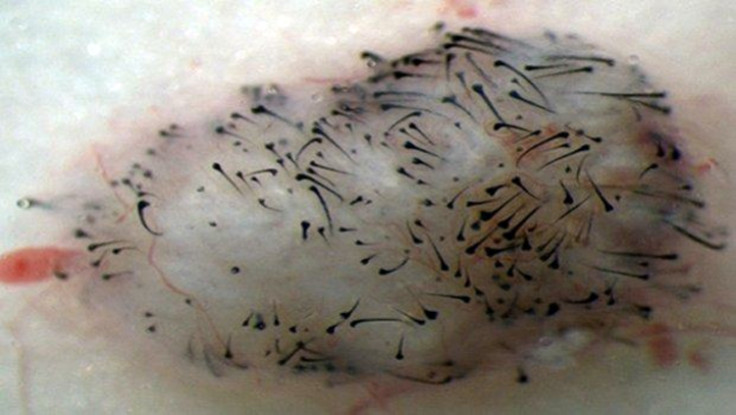Stem cells that can grow human hair created by scientists raising hope of cure

A collaboration of US and Russian scientists has found a way to produce new stem cells that can generate new hair, which is the first step towards developing a cell-based treatment for people with hair loss.
At the moment, hair loss treatments involve transplanting individual hair follicles that are genetically resistant to balding from a part of the body with hair, to a part of the body that is balding.
However, not only is this method hugely expensive, it also comes with side effects like scarring at the area of the body where the hair was taken from, or the transplanted hair can go into shock, fall out, and even cause the remaining hair to fall out too.
Instead, researchers from Sanford-Burnham Medical Research Institute in California and the Koltsov Institute of Developmental Biology in Moscow developed a protocol that coaxed human pluripotent stem cells to become dermal papilla cells.
Their study, entitled "Derivation of Hair-Inducing Cell from Human Pluripotent Stem Cells", is published in the journal PLOS ONE.
Human pluripotent stem cells are cells that can self-replicate to develop into cells and tissues of the three primary layers of cells in the human embryo, from which all tissues and organs in the body develop.
On the other hand, human dermal papilla cells are a unique population of cells that regulate hair-follicle formation and growth cycle in the body.
On their own, they cannot be used for hair transplants because they cannot be obtained in necessary amounts and rapidly lose their ability to induce hair-follicle formation when grown in a laboratory.
However, when the dermal papilla cells created from human pluripotent stem cells were transplanted into mice, they were able to induce hair growth.
"Our stem cell method provides an unlimited source of cells from the patient for transplantation and isn't limited by the availability of existing hair follicles," said Dr Alexey Terskikh, an associate professor in Sanford-Burnham's Development, Aging, and Regeneration Program.
"Our next step is to transplant human dermal papilla cells derived from human pluripotent stem cells back into human subjects. We are currently seeking partnerships to implement this final step."
© Copyright IBTimes 2025. All rights reserved.






















